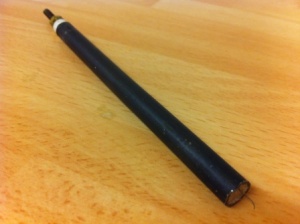Jamie at immersionheaters.uk 07897 246779 loves breweries and brewers, who provide happiness and hangovers to us all. Could live without the hangovers, mind you! The older I get, the longer they seem to last.
Remember all of the stuff that applies to all water immersion heaters, plus the key consideration for breweries is ease of cleaning.
Our existing ranges of immersion heater had limitations when used in brewery applications.
The II Range has many benefits, including bespoke screwplug size, immersed length, double stat pockets, etc, all with a 2 week leadtime, BUT as you can see from the images (particularly the 5th) our aim of maximising the length of 8mm diameter element, hence double looping rather than merely U bending, leads to a fair old ‘clump’ of elements.
Now, we are fully aware that all of you happy brewers are only boiling clean water (ha, ha) and are fastidious in cleaning thoroughly with a jet wash between every brew (chuckle, chuckle), but still, this ‘clump’ led to build up of ‘mystery stuff’ over time, leading to hot spots, element splitting and heater death.
So, in conjunction with one of our Italian suppliers, we designed the BI Range. These are a 10mm, U bent element, which has masses of gap between the elements (see pictures 2, 4 & 6) to enable efficient jet washing of the element to clean off any deposits. We will never be able to deviate from the specs on the website, as we have to buy in bulk with horrible lead times. But thankfully, we seem to have pitched the immersed lengths just right, and the watts density at around the 60w/in² mark, seems to be just right.
Even with the antique gear that some of you chaps are recycling for 21st century brewing, no one has needed any screwplug size other than 2.25″, tho I suppose we could throw on an adaptor to make them 2.5″ if needed.
So if you fancy buying an immersion heater that was actually designed for brewers, give me a call on 07897 246779. Feedback from new and existing customers is greatly appreciated and collated at G##gle & FB.
Thanks for visiting.



